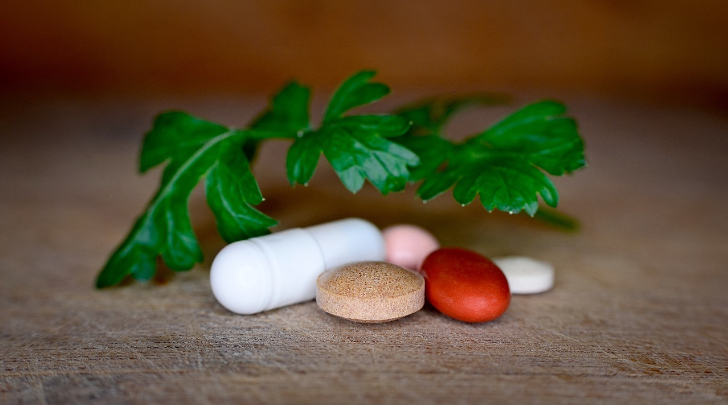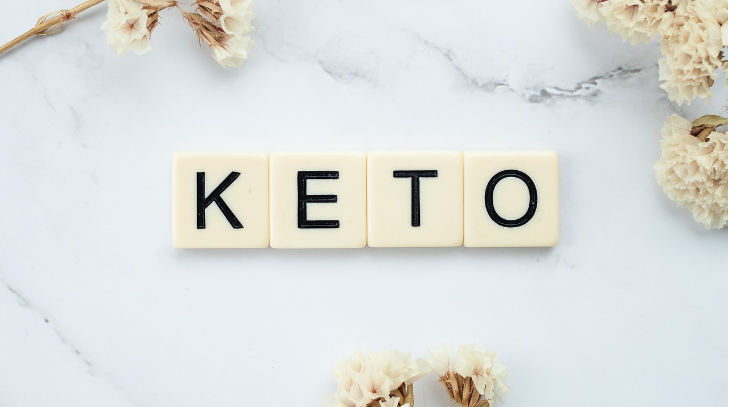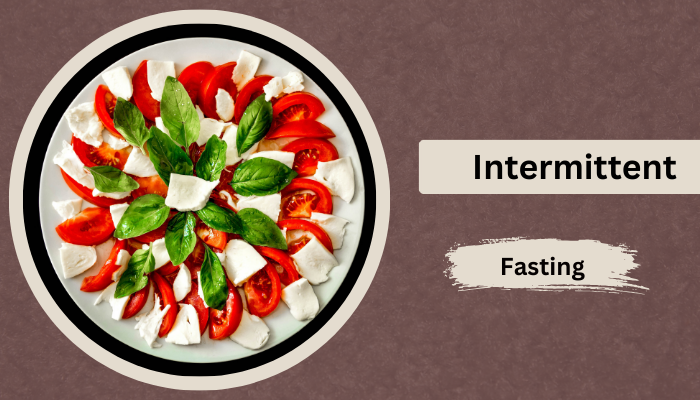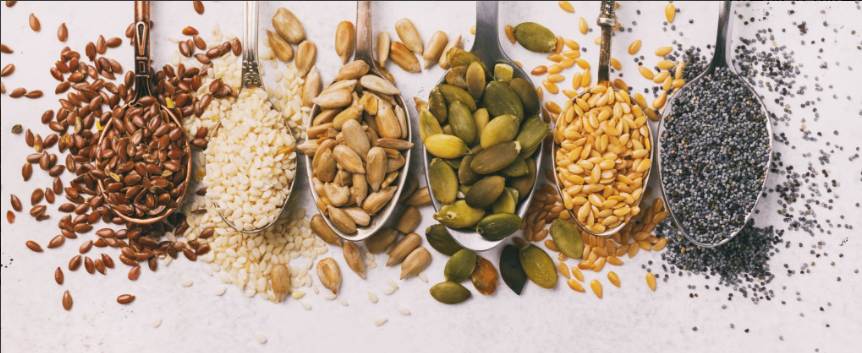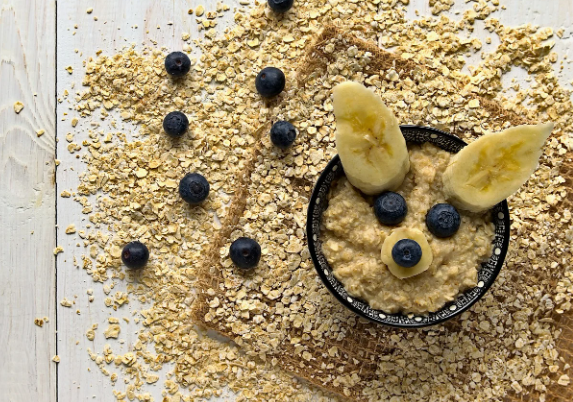Introduction to weight loss at home Although losing weight Loss at home can be a difficult road, it doesn’t have to include costly gym subscriptions or specialized equipment. From the comfort of your own home, you may reach your weight reduction objectives with the correct mentality and a few easy techniques. This post will discuss practical advice on how to reduce your weight gain along with improving your general health. Dietary Modifications while weight loss at home Portion Control: Being mindful of your portion sizes is crucial for weight loss at home. Use smaller plates, eat slowly, and listen to your body’s hunger and fullness cues to avoid overeating. Increase Protein Intake: Increase your intake of foods high in protein, such as fish, eggs, lean meats, and plant-based meals like lentils and beans. Because protein makes you feel fuller for longer, it might help you eat fewer calories and lessen cravings. Prioritize Whole, Unprocessed Foods: Reduce the amount of processed, high-calorie, and sugary foods you consume. Make sure that the majority of the items on your plate are whole, high-nutrient foods including fruits, vegetables, whole grains, and healthy fats. Hydrate Regularly: Drinking plenty of water throughout the day can help boost metabolism, flush out toxins, and prevent overeating. Aim for at least 8 glasses of water per day. Meal Prepping: Setting aside certain hours during the week to proactively prepare wholesome meals and snacks. This can help you in avoiding rash, unhealthy eating decisions and guarantee that you always have wholesome selections on hand. Exercise Routines Bodyweight Exercises: Incorporate a variety of bodyweight exercises, such as push-ups, squats, lunges, and planks, into your daily routine. These exercises can be done anywhere, without the need for any equipment. High-Intensity Interval Training (HIIT): HIIT workouts involve short bursts of intense exercise followed by periods of rest. This type of training can effectively burn calories, boost metabolism, and improve cardiovascular fitness. Cardio Workouts: Engage in regular cardiovascular exercises, such as brisk walking, jogging, or cycling, to burn calories and improve overall fitness. Strength Training: Incorporate strength training exercises, either with resistance bands or your own body weight, to build muscle and increase your metabolism. Flexibility and Mobility: Don’t forget to include stretching and mobility exercises to improve flexibility, reduce the risk of injury, and enhance overall movement quality. Lifestyle Adjustments Get Enough Sleep: Aim for 7-9 hours of quality sleep each night. Adequate sleep is crucial for hormone regulation, energy levels, and overall weight management. Manage Stress: Find healthy ways to manage stress, such as meditation, deep breathing, or engaging in relaxing hobbies. Chronic stress can contribute to weight gain and hinder weight loss at home efforts. Stay Accountable: Consider using a fitness tracker, app, or keeping a food journal to monitor your progress and stay motivated. Sharing your goals with supportive friends or family can also help you stay on track. Incorporate Non-Exercise Activity: Look for opportunities to increase your daily movement, such as taking the stairs instead of the elevator, going for a short walk during your breaks, or doing household chores. Celebrate Small Victories: Celebrate your progress and achievements, no matter how small. Recognizing your hard work and celebrating successes can help you stay motivated and focused on your weight loss journey. Conclusion With the right attitude and techniques, losing weight at home is totally achievable. You may lose weight without spending a lot of money on gym memberships or equipment by changing your lifestyle, implementing efficient exercise routines, and adopting consistent nutritional modifications. Remember, weight loss is a journey, and it’s important to be patient, persistent, and kind to you along the way. Embrace these tips and tricks, and you’ll be well on your way to a healthier, happier you. Written By:- Amisha
Tag: Weight Loss
Top 4 kinds of Weight loss supplements in India
Types of Weight Loss Supplements in India and Their Benefits Weight loss supplements have become increasingly popular in India as people strive to achieve their fitness goals. These supplements can be a useful addition to a healthy lifestyle, but it’s important to understand the different types and their potential benefits. 1. Fat Burners Fat burners are one of the most common types of weight loss supplements in India. These supplements typically contain ingredients like caffeine, green tea extract, or thermogenic compounds that can help boost metabolism and increase fat burning. The potential benefits of fat burners include increased energy, improved fat burning, and reduced appetite. However, it’s important to be cautious with these supplements, as high doses of stimulants can have adverse effects, especially for individuals with underlying health conditions. Some popular fat burners in India include: Caffeine: Caffeine is a stimulant that can increase energy expenditure and fat burning, particularly when combined with exercise. Green tea extract: Green tea is rich in polyphenols and catechins, which may boost metabolism and fat burning. Garcinia cambogia: Garcinia cambodia fruit extract contains hydroxycitric acid (HCA), which may inhibit the production of fat and suppress appetite. L-carnitine: it is an amino acid that plays a role in the transportation of fatty acids for energy production, potentially enhancing fat burning. 2. Appetite Suppressants Appetite suppressants are designed to help control hunger and cravings, making it easier to stick to a calorie controlled diet. The potential benefits of appetite suppressants include reduced hunger, fewer food cravings, and a greater sense of fullness. However, it’s important to use any kind of weight loss supplements with caution, as some may have side effects or interact with medications. Some popular appetite suppressants in India include: Glucomannan: This soluble fiber expands in the stomach, promoting a feeling of fullness and reducing appetite. Chromium: Chromium is a mineral that may help regulate blood sugar levels and reduce food cravings. 5HTP (5Hydroxytryptophan): It is a precursor to serotonin, a neurotransmitter that can influence mood and appetite. 3. Carbohydrate Blockers Carbohydrate blockers are designed to inhibit the absorption of carbohydrates, which can help reduce calorie intake and promote weight loss. The potential benefits of carbohydrate blockers include reduced calorie intake, improved blood sugar management, and potentially reduced fat storage. However, it’s important to use these weight loss supplements judiciously, as they may also interfere with the absorption of other nutrients. Some popular carbohydrate blockers in India include: White kidney bean extract: This extract contains alpha amylase inhibitors that can slow the digestion and absorption of carbohydrates. Chromium: In addition to its potential as an appetite suppressant, chromium may also help regulate blood sugar levels and carbohydrate metabolism. Alphalipoic acid: This antioxidant compound may help improve insulin sensitivity and potentially reduce carbohydrate absorption. 4. Protein Supplements Protein supplements can be a useful tool for weight loss, as they can help promote feelings of fullness and support muscle maintenance during calorie restricted diets. The potential benefits of protein supplements include increased feelings of fullness, muscle maintenance during weight loss, and improved body composition. Some popular protein supplements in India include: Whey protein: Whey protein is a fast absorbing, high quality protein that can help promote muscle growth and maintain lean body mass during weight loss. Casein protein: Casein is a slow absorbing protein that can help provide a sustained feeling of fullness. Plant based proteins: These alternatives to animal based proteins can be a good option for those with dietary restrictions or preferences. 5. Pro-biotic Emerging research suggests that the gut micro-biome may play a role in weight management. Pro-biotic supplements can help support a healthy gut and may have some weight-related benefits. The potential benefits of pro-biotic supplements include improved gut health, reduced inflammation, and potentially some impact on weight management. Some popular pro-biotic supplements in India include: Lactobacillus: This genus of bacteria is commonly found in pro-biotic supplements and may have positive effects on weight management. Bifidobacterium: This genus of bacteria is also commonly found in pro-biotic supplements and may help regulate the gut micro-biome. Saccharomyces boulardii: This pro-biotic yeast strain has been studied for its potential benefits in weight loss and metabolic health. Understanding the potential of weight loss supplements It’s important to note that while these supplements can be a useful addition to a weight loss plan, they should not be viewed as a replacement for a healthy, balanced diet and regular exercise. It’s always recommended to consult with a healthcare professional before starting any new weight loss supplement regimen, especially if you have any underlying health conditions or are taking medication. Additionally, it’s crucial to choose high quality, reputable supplements from trusted brands in India. Some supplements may contain undeclared ingredients or be of questionable quality, so it’s important to do your research and buy from reliable sources. Conclusion In conclusion, weight loss supplements can be a helpful tool for some individuals, but they should be used in conjunction with a comprehensive, sustainable approach to weight management that includes a healthy diet and regular physical activity. Written By:- Amisha
Discover 6 ways of how detox water is benefiting us.
Detox Water: Unleashing the Power of Nature’s Elixir Often referred to as infused water. Because it offers so many health advantages, has become quite popular in recent years. In addition to being delicious, these refreshing mixtures provide our bodies with a natural means of cleansing and nourishment. This post will discuss the many kinds of detox water, their advantages, and how to include them in your regular practice. Types of Detox Water 1. Citrus Infused Water Ingredients: Lemon, lime, orange, grapefruit Benefits: Boosts immune system, aids digestion, and promotes skin health. 2. Berry Infused Water Ingredients: Strawberries, blueberries, raspberries, blackberries Benefits: Anti-oxidantrich, helps reduce inflammation, and supports brain function. 3. Herb Infused Water Ingredients: Mint, cucumber, basil, rosemary Benefits: Reduces stress, improves hydration, and enhances overall well being. 4. Spice Infused Water Ingredients: Ginger, turmeric, cinnamon, cayenne pepper Benefits: Supports the digestive system, reduces inflammation, and boosts metabolism. 5. Fruit and Vegetable infused Water Ingredients: Watermelon, pineapple, celery, kiwi Benefits: Provides a variety of vitamins, minerals, and antioxidants for overall health. Benefits of Detox Water 1. Improved Hydration A tasty and revitalizing take on in order to sustain proper hydration every day of the day a an essential part of overall health and well being is using detox waters. 2. Toxin Removal Detox water’s infusion of herbs can aid in the removal of potentially harmful pollutants and chemicals from the body, growing an improved good-looking space on the inside 3. Digestive Support The addition of herbs to detox water can help the body rid itself of potentially dangerous substances and toxins, creating a more attractive interior environment. 4. Immune System Boost Rich in vitamins and antioxidants, detox waters often have components which promote a healthy immune system and keep against disease. 5. Skin Health The antioxidants and minerals found in detox water are able to minimize inflammation and increase the rate of formation of collagen, making skin look like younger and healthier. 6. Weight Management You may keep hydrated and save calories by switching to infused water from sugary drinks, and this might help with weight reduction. How to Use Detox Water 1. Preparation Fill a pitcher or water bottle with fresh, filtered water. Add the desired combination of fruits, herbs, and/or spices. Let the mixture steep for at least 23 hours, or overnight, to allow the flavors to infuse the water. 2. Consumption Drink the infused water throughout the day, either chilled or at room temperature. Refill the pitcher or bottle with fresh water as needed, and allow the ingredients to continue infusing. Aim to drink at least 8 cups (64 ounces) of infused water per day for optimal benefits. When to Use Detox Water 1. Daily Hydration Incorporate detox water into your daily routine to stay hydrated and promote overall health. 2. Cleansing and Detoxification Drink water during periods of high stress or exposure to environmental toxins to support the body’s natural detoxification processes. 3. Digestive Support Sip on detox water before, during, and after meals to aid in digestion and reduce bloating. 4. Immune System Boost Consume water regularly during cold and flu season to support the immune system and ward off illness. 5. Skin Health Drink detox water daily to nourish the skin and promote a healthy, glowing complexion. Conclusion A quick and effective method to enhance your general health and wellness is to drink infused water. With a range of fresh fruits, herbs, and spices, you may make personalized elixirs that support your own health objectives. There is an infused water recipe that can help, regardless of your goals—it may assist your digestive system, increase hydration, or enhance the health of your skin. Accept the power of nature’s remedy and begin enjoying detox water’s advantages right now. Written By:- Amisha
Keto Diet: A Comprehensive Guide
What is the Keto Diet? The ketogenic diet, is a high-fat, low-carbohydrate dietary approach that has gained significant popularity in recent years. It aims to put the body into a metabolic state called ketosis, where the body begins to burn fat for fuel instead of carbohydrates. In a traditional diet, the body primarily uses glucose, derived from carbohydrates, as its main source of energy. This diet, on the other hand, drastically reduces carbohydrate intake, typically to less than 50 grams per day, forcing the body to transition to an alternative fuel source – ketones. Ketones are produced when the body breaks down fat for energy, and they can be used by the brain and other organs as a source of fuel. This metabolic shift can have various health benefits, including weight loss, improved insulin sensitivity, and reduced inflammation. Benefits of the Keto Diet 1. Weight Loss: The diet is known for its ability to promote weight loss. By restricting carbohydrates and increasing fat intake, the body enters a state of ketosis, which can lead to a higher rate of fat burning and reduced appetite. 2. Improved Insulin Sensitivity: This diet has been shown to improve insulin sensitivity, which is crucial for managing blood sugar levels and reducing the risk of type 2 diabetes. 3.Reduced Inflammation: The high-fat, low-carb nature of the diet can help decrease inflammation in the body, which is linked to various health conditions, such as heart disease, cancer, and Alzheimer’s disease. 4.Improved Brain Function: Ketones can provide an alternative fuel source for the brain, which may lead to improved cognitive function, focus, and mental clarity. 5. Epilepsy Management: This diet has been used successfully to manage epilepsy, particularly in children, by reducing the frequency and severity of seizures. What to Do on the Keto Diet Focus on High-Fat Foods: This diet emphasizes consuming high-fat foods, such as avocados, nuts, seeds, olive oil, and fatty cuts of meat. Limit Carbohydrate Intake: To achieve and maintain ketosis, it’s essential to limit carbohydrate intake to less than 50 grams per day. This means focusing on low-carb vegetables, berries, and other non-starchy foods. Increase Protein Intake: While the diet is high in fat, it’s also important to consume an adequate amount of protein to support muscle mass and overall health. Stay Hydrated: Drinking plenty of water is crucial while following this diet, as the body may lose more fluid and electrolytes during the initial stages of the diet. Monitor Ketone Levels: To ensure that you’re in a state of ketosis, you can use urine, blood, or breath tests to monitor your ketone levels. What to Avoid on the Keto Diet High-Carb Foods: Steer clear of high-carb foods, such as bread, pasta, rice, potatoes, and sugary treats, as these can disrupt ketosis. Processed Foods: Avoid processed and packaged foods, as they often contain hidden carbohydrates and preservatives that can hinder your progress on the diet. Alcohol: Alcohol can be high in carbohydrates and may slow down the process of achieving and maintaining ketosis. Legumes: While some legumes, such as chickpeas and lentils, can be included in moderation, they are generally higher in carbohydrates and should be limited. Certain Vegetables: Some vegetables, such as carrots, beets, and corn, are higher in carbohydrates and should be consumed in moderation while following this diet. Conclusion This diet is a powerful dietary approach that can provide a range of health benefits, from weight loss to improved brain function. By understanding the principles and following the recommended guidelines, individuals can potentially experience transformation results. However, it’s important to remember that it may not be suitable for everyone, and it’s always best to consult with a healthcare professional before starting any new dietary regime. With the right approach and commitment, it can be a highly effective tool in achieving one’s health and wellness goals.Remember, this diet is a highly individualized approach, and it’s important to consult with a healthcare professional before starting any new diet or making significant changes to your eating habits. Written By:- Amisha
Intermittent fasting around the clock: 4 different type
Intermittent fasting Following a schedule that falls between your time of eating and your time of fasting is known as intermittent fasting. You may see several different kinds of intermittent fasting. So here are some of the of the most liked ones. 16/8 method: 16/8 is the most common method of intermittent fasting, followed by a lot of people eating for eight hours and fasting for 16 hours. But in the eight-hour window, you can only eat under the given calories. 5:2 method: In order to follow this diet, you must eat for five days of the week and fast for two consecutive days. In those two days, you can have 500 to 600 calories. 5:2 might be a lot harder to fall, but it is more successful in helping to lose weight. Eat-Stop-Eat Once or twice a week, this strategy entails a total 24-hour fast from eating. You may decide, for instance, to fast from supper the previous evening until dinner the next evening. The Warrior Diet: In order to follow this diet your restrict your eating for a period of 20 hours and eat like a warrior at dinner time. Benefits of Intermittent fasting Intermittent fasting can be done in different ways. Some people decide to fast for 12 to 14 hours, and some for 16 to 8 hours. Some people choose to alternate lengthy intervals of eating and fasting or go for a day or two in a week. Choose the window that suits your daily schedule. It is evident that there is a suggestion that intermittent fasting is more effective than calorie restriction. It is proven to be more successful for weight reduction. Because of fasting, the hormones that rule the metabolism and appetite become more balanced. Research has indicated that there might be some health advantages to intermittent fasting, such as: Weight loss Losing weight intermittently can be accomplished with success. Limiting your eating window makes you automatically eat less calories. Fasting has also been linked in certain studies to increased metabolism. Improved blood sugar control: Low blood sugar and high insulin sensitivity are two common benefits of intermittent fasting Reduced inflammation: Another serious risk factor in many people is chronic inflammation, on a whole another level body while fasting body tends to experience less inflammation. Improved brain health: In some studies it has been found that intermittent fasting has been linked to certain brain enhancing function and protection against neuro-degenerative illnesses including Parkinson’s and Alzheimer’s. Before beginning any new diet, it is important to see your doctor, especially if you have any underlying medical concerns. Some other rules to follow: Drink an ample amount of water; hydration is the key during fasting. Black coffee, water, green tea, etc. During the first few days you might see some negative effects like hunger, exhaustion or irritation. These symptoms might disappear eventually. There is no secret way for losing weight or becoming healthier than intermittent fasting. It is crucial to take it in addition to a balanced diet and frequent exercise. Conclusion In conclusion, it is an easy diet plan that can offer different medical advantages, including weight reduction. Other than that, it can develop glucose control, decreased irritation, and possibly improved cerebrum capability. While there are a few famous irregular fasting techniques, the one that works best for an individual depends on their own tendency and health status. It is required to talk with a medical care professional prior to beginning any new dietary routine, particularly in the event that you have any prior medical conditions. Intermittent fasting is followed with a decent eating routine and standard activities to accomplish ideal health results. With the right methodology, fasting can be a significant device in one’s general health venture. Written By:- Amisha
Seed Cycling: how it is beneficial for your hormones
What is seed cycling? Basically seed seed cycling is a practice when you eat specific seeds during two phases of your menstrual cycle. To begin with the follicular and luteal phases to promote a healthy balance of estrogen and progesterone levels. It’s a gentle and a natural way of reducing PMS symptoms, improve fertility and help simulate menstruation. It is also helpful with other symptoms such as hormonal imbalance. Beyond menstrual cycle post menopausal, seed cycling can be use at different stages of a women’s life. Understanding seed cycle better. There are two phases follicular phase begins the first day of your menstrual bleeding until the ovulation. Which typically last around 14 days. The second phase starts at ovulation until your next menstruation There is a rise in estrogen level during the first half of the cycle, and during the second half of the cycle progesterone level rise while estrogen level slowly decline. An imbalance between estrogen and progesterone can contribute to PMS symptoms, menstrual cramps, acne, short luteal phases and regular cycle. Seed cycling for fertility Moreover, seed cycling is based on the idea of influencing hormone levels through specific seeds, which may be beneficial for fertility. Flax seed in the first half of the cycle (follicular phase) may help regulate estrogen, promoting healthy follicle development for egg maturation. Pumpkin seeds in the second half (luteal phase) might support progesterone production. Which prepares the uterine lining for implantation. Balanced hormones are essential for various aspects of reproduction. Additionally, seeds like flax seed and sesame seeds contain anti-inflammatory properties, which might be helpful for fertility as inflammation can impact implantation. It’s important to note that while these potential benefits sound promising. More research is needed to confirm the effectiveness of seed cycling for improving fertility cycle. Seed cycling for PCOS Here the theory is that eating particular seeds at particular times. Throughout your menstrual cycle might affect your hormone levels. In the luteal phase of the cycle, which is the second half, pumpkin seeds may promote the synthesis of progesterone. While flax seed may aid in the regulation of estrogen in the follicular phase. Maintaining hormone balance is essential for controlling PCOS symptoms. How to incorporate Seed cycling is a straightforward practice to implement into one’s daily routine. The general guideline is to consume 1-2 tablespoons of the recommended seeds per day, either raw or ground up. These seeds can be easily incorporated into your normal diet in various ways – sprinkled on meals, mixed into yogurt or smoothies, or added to salad bowls. The specific seeds to eat depend on which phase of the menstrual cycle you are in, with flax and/or sesame seeds for the follicular phase, and pumpkin and/or sunflower seeds for the luteal phase. The flexibility in preparation and incorporation makes seed cycling a convenient and accessible practice to support hormonal balance throughout the monthly cycle. Nutrients you get from seed cycling Flax seeds : Rich in omega-3 fatty acids, fiber, and lignans (plant compounds with potential health benefits). Pumpkin seeds : A good source of zinc and magnesium. Sesame seeds: A good source of calcium, magnesium and healthy fats Sunflower seeds: A good source of vitamin E, selenium Conclusion In conclusion, seed cycling is a natural approach that involves consuming specific seeds during the different phases of the menstrual cycle to help promote hormonal balance. The theory behind it is that the nutrients in these seeds can support the rise and fall of estrogen and progesterone levels throughout the cycle. Seed cycling may offer potential benefits for managing PMS symptoms, regulating the menstrual cycle, and even improving fertility and PCOS symptoms. However, more research is still needed to conclusively confirm the effectiveness of this practice. Nonetheless, incorporating seed cycling can be a gentle and holistic way for women to support their reproductive health, as the seeds provide a variety of beneficial nutrients. As with any new health practice, it’s important to consult with a healthcare provider, especially for those with underlying medical conditions, to ensure it is suitable and safe for your individual needs.
4 Types of Oats for weight loss: fuel supplier and its nutritional benefits
Oats for Weight Loss All types of oats are high in fiber, which is essential for gut health. You’re less inclined to overeat since fiber makes you feel fuller for a longer period of time, making oats for weight loss an essential part of the diet. To begin with we should look at the many varieties of oats and their health advantages is provided below: Types of Oats for weight loss Quick oats Significantly quicker oats are thinner than the old-fashioned oats, which helps to cook them faster. They have a comparable surface and flavor to rolled oats. One cup (cooked) of fast oats contains around 3 gms of fiber. They have a somewhat higher glycemic index than steel-cut oats or moved oats. Steel-cut oats The least-dealt-with kind of oat is steel-cut. The surface and sort of steel-cut oats are chewy and nutty. Out of all the oat combinations, they have the best fiber content; a cooked cup has around 5 gms of fiber. Besides considering the fact that steel-cut oats have a low glycemic record and won’t raise your glucose. Rolled oats (old-fashioned oats): Rolled oats are steamed and straightened, which makes them cook quicker than steel-cut oats. They have a gentler surface than steel-cut oats and a milder flavor. One cup (cooked) of moved oats contains around 4 grams of fiber. They likewise have a low glycemic record. Instant oats They are the most handled kind of oat. They are pre-cooked and rolled extremely slender, which permits them to cook quickly in steaming hot water. Instant oats frequently have added sugar and enhancing. One cup (cooked) of moment oats commonly contains around 1-2 grams of fiber, and the additional sugar can raise the glycemic file. Nutritional Value of oats Packed with nutrients, blend of fiber, minerals, and anti-oxidants that make them a significant choice on your fitness journey. Let’s understand their benefits in details: Fiber There are two kinds of fiber tracked down in oats: soluable and insoluble. They are a strongly suggested source of fiber. Soluable fiber like beta-glucan structure a gel in your stomach-related framework that shapes a sensation of completion and manages glucose levels. Insoluble fiber keeps things moving flawlessly through your stomach. Protein: Unlike other grains, you can find high quantity of protein content in oats. You’ll find 100 gm serving of oats provide you 17-18% in depending on which kind of oats you are using. Glycemic index: Oats have low glycemic index, they don’t cause a high spike up your blood sugar level. Making it a beneficial for people managing their diabetes. Micronutrient: Good source of vitamins and minerals are found in oats. They are very high in manganese, which is important for metabolism, bone health, and enzyme activity. They also include good amounts of iron, copper, phosphorus, magnesium, and B vitamin all of these are essential for different body processes. Oats for weight loss Oats for weight loss affect weight due to a number of variables, making them a useful tool for weight loss. The high fiber content found in oats is particularly in the soluble variety. This super fiber has the amazing capacity to absorb water from your digestive tract and produces a gel that functions in two important ways. This gel prolongs feelings of fullness by slowing down the entire digestive process.This results in less of a desire to snack and generally fewer desires over the day, which eventually aids with calorie consumption reduction. Conversely, beta-glucan is an important factor in blood sugar regulation. Enjoying a bowl of muesli helps the beta-glucan capability by dialling back glucose take-up into the circulation. This prevents the glucose from rising and falling excessively fast, which can exhaust your energy and prompt you to revel in unfortunate snacks to compensate for the drops. Second, oats low glycemic index (GI) makes them stand out. GI system has ranked carbs accordingly to how they affect blood sugar levels. High-GI foods make blood sugar shoot up quickly, like a sugar rocket taking off, then plummet quickly, leaving you feeling exhausted and maybe looking for sugary snacks for a little pick-me-up. Low GI of oats helps them release that sugar into your circulation gradually. Consistent energy levels help you stay focused and avoid blood sugar drops, which can lead to hunger sensations and undermine your weight reduction efforts. Conclusion Oats for weight reduction are a fantastic decision for anybody hoping to work on their general well being and arrive at their weight reduction goals. With their great supplement profile and remarkable properties, oats can be a significant device in your weight reduction weapons store. Integrating oats into your eating regimen is a straightforward yet strong method for supporting your weight reduction venture and accomplishing your objectives. Written By:- Amisha
Low calorie food: successfully following the lifestyle
Low calorie food Many individuals resort to low calorie food in an effort to get thinner. The day-to-day calorie admission is restricted to 1200–1500 for ladies and 1500–1800 for guys. Thus, there is a calorie shortage because your body removes a larger number of calories than it consumes. Natural food varieties like organic products, vegetables, and lean protein sources are needed in low-calorie foods. These control your calorie consumption while maintaining a sense of completion and fulfilment. Finding a well-rounded strategy that emphasizes nutrient-dense. Whole meals and includes techniques like strength training to reduce. Muscle loss and increase metabolism is important. Recall that losing weight is a journey, and for long-term success, a sustained, moderate-calorie diet together with regular exercise is frequently advised. Low calorie food: science behind it Calorie Deficit: a calorie shortfall is the point at which your body ousts a bigger number of calories than it consumes. Your body involves the put away fat as fuel because of this deficiency, which causes weight reduction. Metabolic Rate: Your body uses your metabolic rate, which is like its engine’s output, to continuously burn calories to power all of your activities. This may be measured in two primary ways: While resting metabolic rate (RMR) is comparable but may include some activity, basal metabolic rate (BMR) is the minimal number of calories required for basic operations while at rest. Because muscle burns more calories than fat even while at rest, muscular mass is important. Understanding your metabolic rate is helpful in managing your weight since weight gain results from ingesting more calories than you burn, and vice versa. Types of Low calorie Diets: Traditional Low-Calorie Diet (LCD): For ladies, this implies ingesting 1200-1500 calories each day, and for guys, 1500-1800 calories each day. It underlines entire, natural food sources like entire grains, organic products, vegetables, and lean protein. Very Low-Calorie Diet (VLCD): This is a stricter diet that typically involves medical supervision and calls for 800-1000 calories per day. To guarantee enough nutrition, it could entail meal substitutes. Benefits: Effective Weight Loss: Low calorie food can lead to significant weight, especially initially. Studies show they can be as effective as other approaches in the short term. Improved Health Markers: losing weight following calorie deficit can affect your health in many ways like lowering your blood pressure, cholesterol levels, blood sugar control and reducing the risk of chronic diseases like diabetes and heart disease. Potential challenges while doing calorie deficit: Nutrient Deficiencies: Consuming low calorie food makes it harder to get all the nutrients you need. It would consist of a range of meals low in nutrients. It’s important to think about supplements under a doctor’s supervision. Supplements provide you with the essential quantity, which is insufficient for what we obtain from our diets. Muscle Loss: One of the major challenges you face with calorie deficit is you tend to lose a lot of muscle during this process. It is crucial to incorporate weight training along and maintaining metabolism. Sustainability: Maintain long-term strict low calorie food can be difficult to follow. Finding a healthy, balanced approach you can stick with everyday. Maximizing Success: Doctor Consultation: Discuss any goals you have in mind and any underlying health conditions with your doctor before you consider following the low calorie diet. Registered Dietician: Customizing your diet including meeting your daily caloric requirements and satisfying your chosen taste buds. You can also choose to eat exclusively vegetarian or entirely non-vegetarian meals, or a combination of the two making it a perfect combination of low calorie food. Focus on Whole Foods: Incorporate more fruits, vegetables, lean protein, and whole grains to feel full and satisfied while keeping calorie intake low. Mindful Eating: Observe your body’s signals of hunger and fullness. Take your time and enjoy your meal to prevent overindulging. Water Drinking plenty of water keeps you fuller which can curb your cravings. Physical activity: Regular exercising can aid weight loss and overall health. Conclusion Consumption of low calorie food shouldn’t be a crash course, despite the allure of rapid results. It functions by causing an imbalance in which your body is forced to burn more calories than it takes in, causing it to turn to stored fat as fuel. This translates to losing weight, but it’s imperative to do so under a doctor’s supervision. For your specific requirements, they can assist in establishing a deficit that is both safe and sustainable.Recall that losing weight in a healthy way is a marathon, not a sprint. In order to maintain a sustainable calorie deficit and feel satisfied and fed, concentrate on packing your plate with nutritious foods. You’ll be on the road to long-term success after following it successfully. Written By:- Amisha
How to abide any 7 day diet plan for weight loss
Guidance to effective follow 7-Day Diet A 7 day diet plan might help you lose weight quickly. But maintaining good eating habits is more important for long-term success. Whole foods are closer to being more natural and are either unprocessed or very less processed. In general, they have fewer calories, bad fats, added sugar, and salt than processed meals, but more minerals and fiber. Selecting whole foods will help you control your calorie intake. Which is crucial for weight loss, and feel content and fuller after eating. Finding the Right 7-day diet Plan: Needed Calories: think about the specific number of calories you need to lose weight. Like 1200–1500 calories a day is a typical recommendation. However, this might vary from person to person. Balance and Variety : choosing a plan that fulfills all your needs and includes all food groups will ensure you get the nutrients your body needs. End goal: Think about how the strategy that fit your daily lifestyle. It might be challenging to stick to a restricted diet. But, if you’d prefer a more defines approach, a plan with set meals may suit your needs. Tips for Following a 7-Day Plan: Meal Prep: To start saving some time prepare some meals or ingredients beforehand to save time and avoid unhealthy choices. Stay Hydrated: Hydration is the key, drinking plenty of water throughout the day to curb cravings and feel full. Water doesn’t contain any calories, but it fills up your stomach, making you feel fuller and less likely to eat. Mindful Eating: Observe your body’s hunger signals and take your time eating. This helps you prevent overeating by giving your body enough to understand your body. And improving your 7 day diet plan eventually. Understanding your body’s needs: Increase your portion sizes or include a healthy snack if you’re feeling too constrained. You don’t have to push yourself to finish your plate. First pay attention to your body’s overall response. Change the plan or speak with a physician or certified dietitian. letting a professional help will get you out of situations such as headaches, exhaustion, or trouble sleeping. Beyond the 7 day diet plan: Focus on Whole Foods: Generally, we eat whole grains, lean proteins, fruits, and vegetables, as well as other unprocessed, nutrient-dense foods. These are packed with vitamins, minerals, fiber, and other essential nutrients that your body needs to function properly. Portion Control : So, to control your portions, use smaller dishes and plates. Larger servings tend to subconsciously make individuals consume more food, according to studies. You might fool your brain into believing that you are eating more food than you actually are by utilising smaller dishes and bowls. Cook More Often: It is easier to include different kinds of fruits, vegetables, and whole grains in your meals. Cooking at home allows you to manage your meals in a more effective way. Knowing your portions and amounts in the long term might help you maintain your weight loss objectives. As well as lean protein sources and better cooking techniques like baking, grilling, stir-frying, or steaming the food. Conclusion Hence, remember, the key to weight loss is a personalised approach. It’s essential to understand your body’s specific requirements when creating a 7-day diet plan that can last. While these general guidelines and example plan provide an excellent starting point, you should see a physician or certified nutritionist to customise a plan that takes into account your age, gender, exercise level, and any health concerns you may have. Moreover, a healthcare professional can guide you towards a safe and effective plan that meets your specific needs and sets you up for long-term success. Your unique requirements and goals will be met, and by creating lifelong healthy habits, this customised approach will position you for long-term success. Written By:- Amisha



